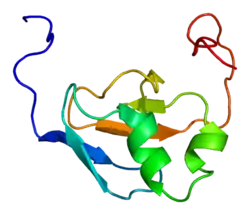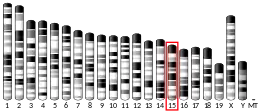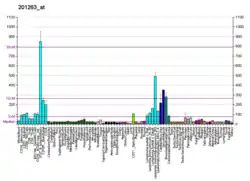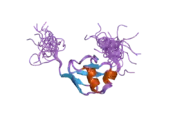| TARS1 | |||||||||||||||||||||||||||||||||||||||||||||||||||
|---|---|---|---|---|---|---|---|---|---|---|---|---|---|---|---|---|---|---|---|---|---|---|---|---|---|---|---|---|---|---|---|---|---|---|---|---|---|---|---|---|---|---|---|---|---|---|---|---|---|---|---|
 | |||||||||||||||||||||||||||||||||||||||||||||||||||
| |||||||||||||||||||||||||||||||||||||||||||||||||||
| Identifiers | |||||||||||||||||||||||||||||||||||||||||||||||||||
| Aliases | TARS1, ThrRS, threonyl-tRNA synthetase, TARS, threonyl-tRNA synthetase 1, TTD7 | ||||||||||||||||||||||||||||||||||||||||||||||||||
| External IDs | OMIM: 187790 MGI: 106314 HomoloGene: 11852 GeneCards: TARS1 | ||||||||||||||||||||||||||||||||||||||||||||||||||
| |||||||||||||||||||||||||||||||||||||||||||||||||||
| |||||||||||||||||||||||||||||||||||||||||||||||||||
| |||||||||||||||||||||||||||||||||||||||||||||||||||
| |||||||||||||||||||||||||||||||||||||||||||||||||||
| |||||||||||||||||||||||||||||||||||||||||||||||||||
| Wikidata | |||||||||||||||||||||||||||||||||||||||||||||||||||
| |||||||||||||||||||||||||||||||||||||||||||||||||||
Threonyl-tRNA synthetase, cytoplasmic is an enzyme that in humans is encoded by the TARS gene.[5]
Aminoacyl tRNA synthetases catalyze the aminoacylation of tRNA by their cognate amino acid. Because of their central role in linking amino acids with nucleotide triplets contained in tRNAs, aminoacyl-tRNA synthetases are thought to be among the first proteins that appeared in evolution. Threonyl-tRNA synthetase belongs to the class-II aminoacyl-tRNA synthetase family[5]
See also
References
- 1 2 3 GRCh38: Ensembl release 89: ENSG00000113407 - Ensembl, May 2017
- 1 2 3 GRCm38: Ensembl release 89: ENSMUSG00000022241 - Ensembl, May 2017
- ↑ "Human PubMed Reference:". National Center for Biotechnology Information, U.S. National Library of Medicine.
- ↑ "Mouse PubMed Reference:". National Center for Biotechnology Information, U.S. National Library of Medicine.
- 1 2 "Entrez Gene: TARS threonyl-tRNA synthetase".
Further reading
- Freist W, Gauss DH (1995). "Threonyl-tRNA synthetase". Biol. Chem. Hoppe-Seyler. 376 (4): 213–24. PMID 7626230.
- Cruzen ME, Arfin SM (1991). "Nucleotide and deduced amino acid sequence of human threonyl-tRNA synthetase reveals extensive homology to the Escherichia coli and yeast enzymes". J. Biol. Chem. 266 (15): 9919–23. doi:10.1016/S0021-9258(18)92906-6. PMID 2033077.
- Kontis KJ, Arfin SM (1989). "Isolation of a cDNA clone for human threonyl-tRNA synthetase: amplification of the structural gene in borrelidin-resistant cell lines". Mol. Cell. Biol. 9 (5): 1832–8. doi:10.1128/MCB.9.5.1832. PMC 362973. PMID 2747635.
- Gerken SC, Wasmuth JJ, Arfin SM (1986). "Threonyl-tRNA synthetase gene maps close to leucyl-tRNA synthetase gene on human chromosome 5". Somat. Cell Mol. Genet. 12 (5): 519–22. doi:10.1007/BF01539923. PMID 3464105. S2CID 32380159.
- Pan F, Lee HH, Pai SH, Lo KY (1982). "Purification and subunit structure studies of human placental threonyl-tRNA synthetase". Int. J. Pept. Protein Res. 19 (3): 300–9. doi:10.1111/j.1399-3011.1982.tb03042.x. PMID 7118399.
- Pan F, Lo KY, Pai SH, Lee HH (1982). "Kinetic mechanism of threonyl-tRNA synthetase from human placenta". Int. J. Pept. Protein Res. 20 (2): 159–66. doi:10.1111/j.1399-3011.1982.tb02670.x. PMID 7118437.
- Ogata K, Kurahashi A, Nishiyama C, Terao K (1994). "Presence of role of the 5SrRNA-L5 protein complex (5SRNP) in the threonyl- and histidyl-tRNA synthetase complex in rat liver cytosol". Biochim. Biophys. Acta. 1218 (3): 388–400. doi:10.1016/0167-4781(94)90192-9. PMID 8049265.
- Maruyama K, Sugano S (1994). "Oligo-capping: a simple method to replace the cap structure of eukaryotic mRNAs with oligoribonucleotides". Gene. 138 (1–2): 171–4. doi:10.1016/0378-1119(94)90802-8. PMID 8125298.
- Suzuki Y, Yoshitomo-Nakagawa K, Maruyama K, et al. (1997). "Construction and characterization of a full length-enriched and a 5'-end-enriched cDNA library". Gene. 200 (1–2): 149–56. doi:10.1016/S0378-1119(97)00411-3. PMID 9373149.
- Strausberg RL, Feingold EA, Grouse LH, et al. (2003). "Generation and initial analysis of more than 15,000 full-length human and mouse cDNA sequences". Proc. Natl. Acad. Sci. U.S.A. 99 (26): 16899–903. Bibcode:2002PNAS...9916899M. doi:10.1073/pnas.242603899. PMC 139241. PMID 12477932.
- Ota T, Suzuki Y, Nishikawa T, et al. (2004). "Complete sequencing and characterization of 21,243 full-length human cDNAs". Nat. Genet. 36 (1): 40–5. doi:10.1038/ng1285. PMID 14702039.
- Gerhard DS, Wagner L, Feingold EA, et al. (2004). "The status, quality, and expansion of the NIH full-length cDNA project: the Mammalian Gene Collection (MGC)". Genome Res. 14 (10B): 2121–7. doi:10.1101/gr.2596504. PMC 528928. PMID 15489334.
- Rual JF, Venkatesan K, Hao T, et al. (2005). "Towards a proteome-scale map of the human protein-protein interaction network". Nature. 437 (7062): 1173–8. Bibcode:2005Natur.437.1173R. doi:10.1038/nature04209. PMID 16189514. S2CID 4427026.
- Vasilescu J, Zweitzig DR, Denis NJ, et al. (2007). "The proteomic reactor facilitates the analysis of affinity-purified proteins by mass spectrometry: application for identifying ubiquitinated proteins in human cells". J. Proteome Res. 6 (1): 298–305. CiteSeerX 10.1.1.401.4220. doi:10.1021/pr060438j. PMID 17203973.
- Tu LC, Yan X, Hood L, Lin B (2007). "Proteomics analysis of the interactome of N-myc downstream regulated gene 1 and its interactions with the androgen response program in prostate cancer cells". Mol. Cell. Proteomics. 6 (4): 575–88. doi:10.1074/mcp.M600249-MCP200. PMID 17220478.
- Ewing RM, Chu P, Elisma F, et al. (2007). "Large-scale mapping of human protein-protein interactions by mass spectrometry". Mol. Syst. Biol. 3 (1): 89. doi:10.1038/msb4100134. PMC 1847948. PMID 17353931.
This article is issued from Wikipedia. The text is licensed under Creative Commons - Attribution - Sharealike. Additional terms may apply for the media files.





